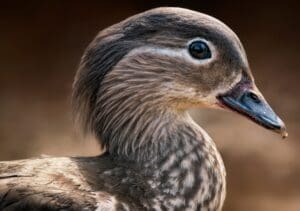Unleash the hidden world of bird beaks, from filter feeders to fish pluckers, a key to understanding their behavior and ecology.
A bird’s beak is primarily used for eating. A bird’s beak type provides a lot more information about what the bird is doing. Bird beaks are marvelous tools of nature that are more than a mouthpart. They came in different shapes and sizes.
Each shape helps the birds to eat different food. Also, they help birds in building nests, cleaning feathers, and protecting chicks. Knowing the uses of bird beak helps us understand how they are used for feeding, adaptation, and survival. Let’s explore the amazing ways that birds use their beaks.
What Are Bird Beaks?
Birds don’t have teeth that unlink other mammals. Bird beaks act like teeth, hands, and lips. They help birds to eat. Bird beaks are made of keratin (a strong material that lines inside and outside surfaces of the body. A bird beaks exceptional tool that helps birds catch food, form nests, avoid predators, and even groom themselves.
Evolutionary Importance of Bird Beaks
As we consider, bird beaks are not just tools. Bird beaks are adaptable to suit diverse environments. Here are a few points that uncover the importance of bird beaks:
Dietary Specialization
Different shapes and sizes of bird beaks help them gain food. For example, the strong, hooked beak of a hawk is ideal for ripping up the flesh. The long, slender beak of a hummingbird is perfect for sipping nectar from different flowers.
Habitat Adaptation
Beaks are also adapted according to different habitats. For instance, the wide, flat beak of a duck helps to filter food from water. The sharp, pointed beak of a woodpecker is perfect for catching insects from trees.
Reproductive Success
Bird beaks play a vital role in courtship and breeding processes. Elaborate beak displays, such as parrots, can attract their mate and strengthen their pair bonds.
Types and Uses of Birds Beak
Bird beaks vary depending on their habitat and species. Here are some types with proper uses of birds beak:
1. Conical Beaks
The strong muscles in this type of beak allow birds to apply pressure on hard sheels and gain consumable parts.
Example: Sparrows and Finches have thick, short, and conical beaks.
Use of conical beaks:
Cracking nuts and seeds
Open tough food
2. Hooked Beaks
These beaks are sharp and curved, essential for hunting animals.
Example: birds like eagles, hawks, and owls.
Use of hooked beaks:
Catching the prey
Ripping flesh into pieces
Eating meat
3. Long, Thin Beaks
Long, thin beaks help birds to sip nectar from flowers without effecting their bloom.
Example: Birds like sunbirds and hummingbirds
Use of long, thin beaks:
Sipping nectar from flowers
Feeding insects inside the flower
4. Chisel-like Beaks
These beaks are strong enough to search in trees for insects without harming the bird.
Example: Woodpeckers
Use of chisel-like beaks:
Chiseling wood in search for insects
Creating chamber for nesting opportunity
5. Spoon-shaped Beaks
Spoon-shaped beaks are used for filtering food from water. They are ideal for birds that feed in water.
Example: Spoonbills
Use of spoon-shaped beaks:
Dig out fish, insects, and aquatic organisms
Filter out food from surface of water
6. Pelican’s Pouch Beak
Pelican’s pouch beak is ideal for catching fish. The lower part of this beak acts like a net, which scatters fish and water.
Example: Pelican
Uses of Pelican Beaks:
Holding fish after catching
Digging water and prey
Special Uses of Bird Beaks Beyond Feeding
There are some additional uses of birds beak beyond feeding.
Many birds use their beaks for gathering material for building nests.
Birds can use their beaks to clean their feathers and remove the dirt.
Birds can use beaks to defend their colony, protect their young, and avoid predators.
Birds can use their beaks to attract their mates while showing emotion.
Many birds use their beaks to balance their body temperature.
Conclusion
Uses of birds’ beaks are remarkable mechanisms far beyond feeding. From nest building to grooming and adaptation, bird beaks are evolved to meet the certain needs of different species. Understanding the purpose and importance of them not only highlights their diversity in climate but also gives us insights about the adaptation of birds.
In today’s rapidly evolving world, when human activities are harming these species, it is crucial to incorporate helping strategies for these incredible creatures.
FAQ’s
1. What are the benefits of bird beaks?
There are several benefits of bird beaks beyond feeding. These are:
Nest building
Avoid predators
Feather cleaning
To attract their mates
To maintain body temperature
2. What are the 4 types of beaks?
Beak size and shape vary depending on bird species and habitat. Here are four types of beaks:
Conical beaks
Hooked beaks
Chisel-like beaks
Long, thin beaks
What is a bird’s beak called?
A bird beak is structured with a material called keratin. It acts like lips, teeth, and hands. It can be called a bill or beak. Both terms are considered correct.
Read more:
A Deep Dive Into Their Role and Adaptation Uses of Bird Beaks



























